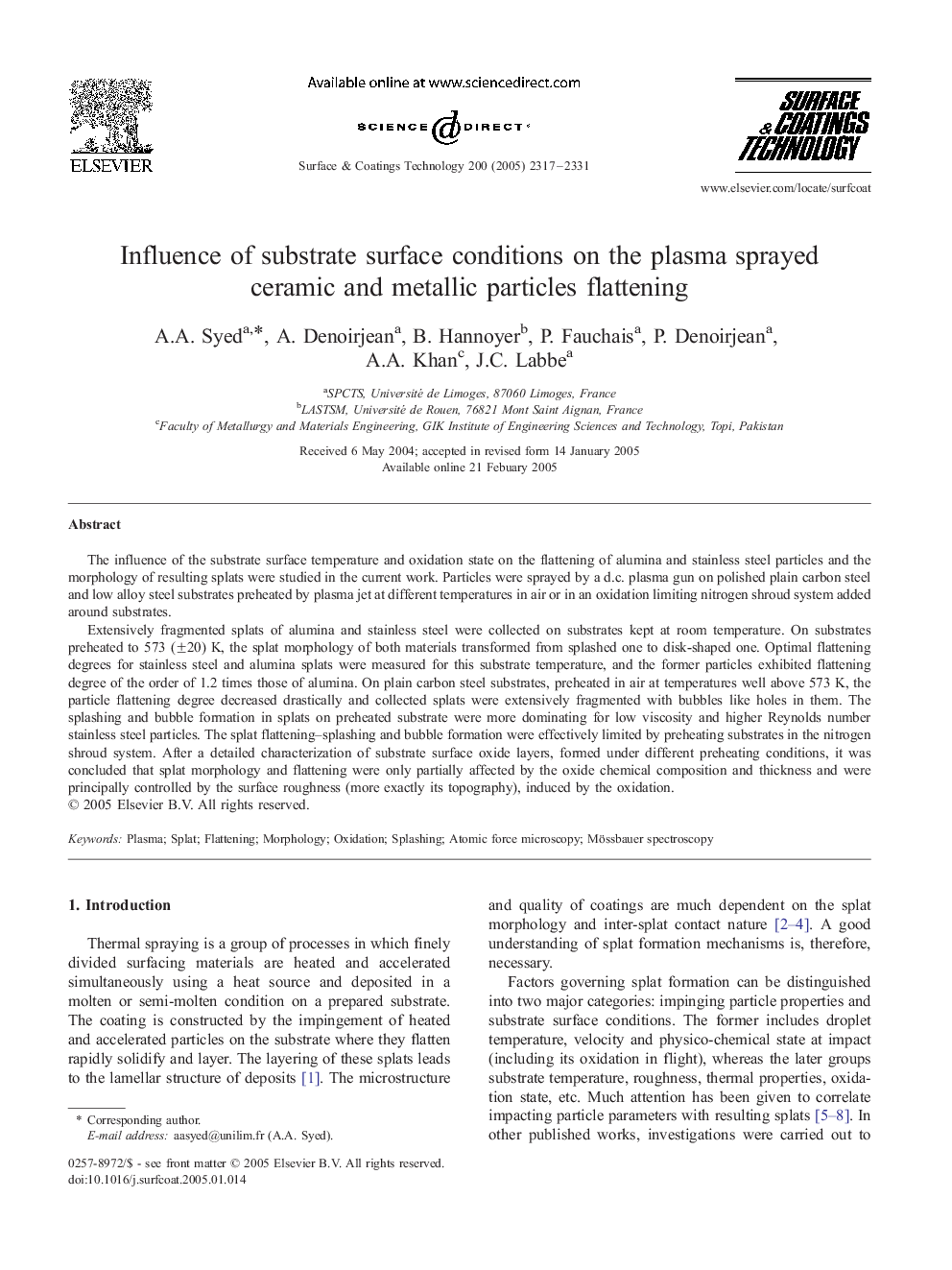| کد مقاله | کد نشریه | سال انتشار | مقاله انگلیسی | نسخه تمام متن |
|---|---|---|---|---|
| 1663447 | 1008469 | 2005 | 15 صفحه PDF | دانلود رایگان |

The influence of the substrate surface temperature and oxidation state on the flattening of alumina and stainless steel particles and the morphology of resulting splats were studied in the current work. Particles were sprayed by a d.c. plasma gun on polished plain carbon steel and low alloy steel substrates preheated by plasma jet at different temperatures in air or in an oxidation limiting nitrogen shroud system added around substrates.Extensively fragmented splats of alumina and stainless steel were collected on substrates kept at room temperature. On substrates preheated to 573 (±20) K, the splat morphology of both materials transformed from splashed one to disk-shaped one. Optimal flattening degrees for stainless steel and alumina splats were measured for this substrate temperature, and the former particles exhibited flattening degree of the order of 1.2 times those of alumina. On plain carbon steel substrates, preheated in air at temperatures well above 573 K, the particle flattening degree decreased drastically and collected splats were extensively fragmented with bubbles like holes in them. The splashing and bubble formation in splats on preheated substrate were more dominating for low viscosity and higher Reynolds number stainless steel particles. The splat flattening–splashing and bubble formation were effectively limited by preheating substrates in the nitrogen shroud system. After a detailed characterization of substrate surface oxide layers, formed under different preheating conditions, it was concluded that splat morphology and flattening were only partially affected by the oxide chemical composition and thickness and were principally controlled by the surface roughness (more exactly its topography), induced by the oxidation.
Journal: Surface and Coatings Technology - Volume 200, Issue 7, 21 December 2005, Pages 2317–2331